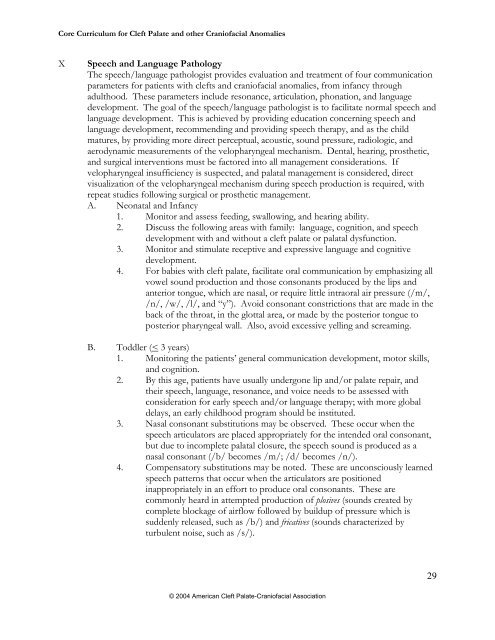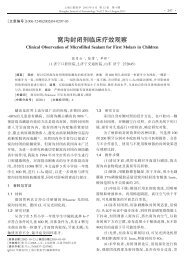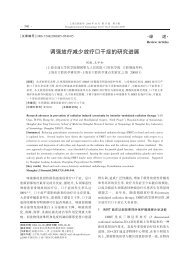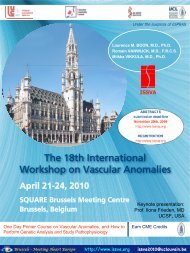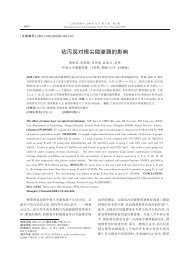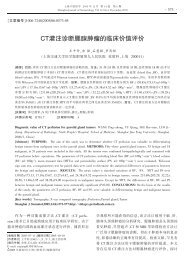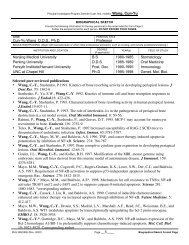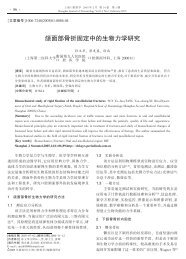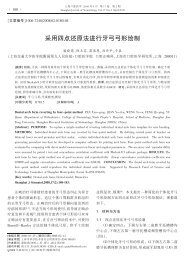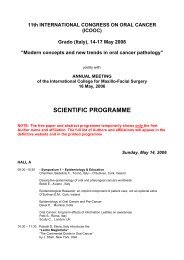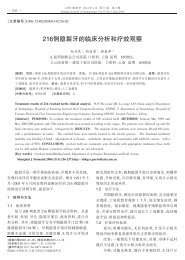core curriculum cleft lip/palate craniofacial anomalies
core curriculum cleft lip/palate craniofacial anomalies
core curriculum cleft lip/palate craniofacial anomalies
Create successful ePaper yourself
Turn your PDF publications into a flip-book with our unique Google optimized e-Paper software.
Core Curriculum for Cleft Palate and other Craniofacial Anomalies<br />
X<br />
Speech and Language Pathology<br />
The speech/language pathologist provides evaluation and treatment of four communication<br />
parameters for patients with <strong>cleft</strong>s and <strong>craniofacial</strong> <strong>anomalies</strong>, from infancy through<br />
adulthood. These parameters include resonance, articulation, phonation, and language<br />
development. The goal of the speech/language pathologist is to facilitate normal speech and<br />
language development. This is achieved by providing education concerning speech and<br />
language development, recommending and providing speech therapy, and as the child<br />
matures, by providing more direct perceptual, acoustic, sound pressure, radiologic, and<br />
aerodynamic measurements of the velopharyngeal mechanism. Dental, hearing, prosthetic,<br />
and surgical interventions must be factored into all management considerations. If<br />
velopharyngeal insufficiency is suspected, and palatal management is considered, direct<br />
visualization of the velopharyngeal mechanism during speech production is required, with<br />
repeat studies following surgical or prosthetic management.<br />
A. Neonatal and Infancy<br />
1. Monitor and assess feeding, swallowing, and hearing ability.<br />
2. Discuss the following areas with family: language, cognition, and speech<br />
development with and without a <strong>cleft</strong> <strong>palate</strong> or palatal dysfunction.<br />
3. Monitor and stimulate receptive and expressive language and cognitive<br />
development.<br />
4. For babies with <strong>cleft</strong> <strong>palate</strong>, facilitate oral communication by emphasizing all<br />
vowel sound production and those consonants produced by the <strong>lip</strong>s and<br />
anterior tongue, which are nasal, or require little intraoral air pressure (/m/,<br />
/n/, /w/, /l/, and “y”). Avoid consonant constrictions that are made in the<br />
back of the throat, in the glottal area, or made by the posterior tongue to<br />
posterior pharyngeal wall. Also, avoid excessive yelling and screaming.<br />
B. Toddler (< 3 years)<br />
1. Monitoring the patients’ general communication development, motor skills,<br />
and cognition.<br />
2. By this age, patients have usually undergone <strong>lip</strong> and/or <strong>palate</strong> repair, and<br />
their speech, language, resonance, and voice needs to be assessed with<br />
consideration for early speech and/or language therapy; with more global<br />
delays, an early childhood program should be instituted.<br />
3. Nasal consonant substitutions may be observed. These occur when the<br />
speech articulators are placed appropriately for the intended oral consonant,<br />
but due to incomplete palatal closure, the speech sound is produced as a<br />
nasal consonant (/b/ becomes /m/; /d/ becomes /n/).<br />
4. Compensatory substitutions may be noted. These are unconsciously learned<br />
speech patterns that occur when the articulators are positioned<br />
inappropriately in an effort to produce oral consonants. These are<br />
commonly heard in attempted production of plosives (sounds created by<br />
complete blockage of airflow followed by buildup of pressure which is<br />
suddenly released, such as /b/) and fricatives (sounds characterized by<br />
turbulent noise, such as /s/).<br />
29<br />
© 2004 American Cleft Palate-Craniofacial Association


